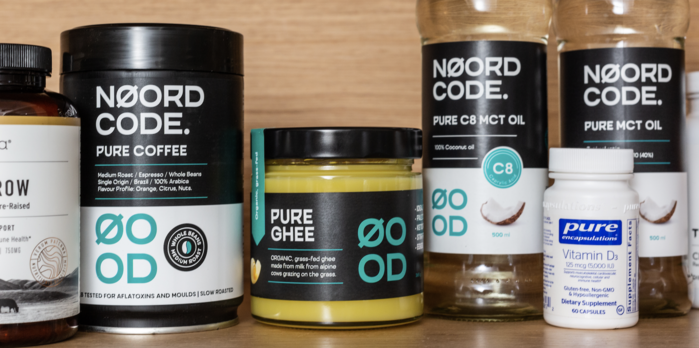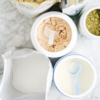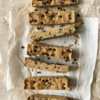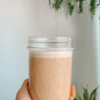How To Do Keto The Clean Way

Did you go on the ketogenic diet because you got excited at the thought of losing weight from a double bacon cheeseburger, but without the bun? Looks like you're on the Dirty Keto bandwagon. Dirty Keto follows the same breakdown of fats, proteins and carbohydrates as a regular ketogenic diet. But there's a substantial difference: it doesn't matter where these macronutrients come from. A whole food - clean - ketogenic diet focuses on quality fats like MCT Oil, grass-fed ghee and butter. On Dirty Keto, you can go through the MC drive-thru and still loose weight.
Weight loss is one of the main reasons for the growing popularity surrounding the ketogenic diet, and you'll surely achieve that with Dirty Keto. Yet there is a catch. Dirty Keto may work in the short term, but in the long term it does not contribute to health. Which is precisely the second reason people choose a ketogenic diet.
Packaged foods are easy on the go and quick, but lack essential nutrients. In addition, the long list of preservatives and artificial flavors can bring harm to your overall health. [1]
Whole food ketogenic diet
Want to do ketogenic responsibly? Then prioritize quality fats like MCT Oil and grass-fed ghee or butter, not low-quality vegetable oils. Do you still lean toward a bacon cheeseburger? Fine. Go for a grass-fed beef burger and raw-milk quality cheese from the cheese shop. Choose nitrate-free bacon from pigs not fed soy or corn (polyunsaturated fatty acids, abbreviated as PUFAs, more on that later). [2]
Best fats to cook with
Choose your fats wisely and pay attention to the smoke point of an oil (or fat) when cooking or baking. The smoke point is the temperature at which an oil or fat begins to decompose and become rancid (and even toxic and indigestible). A common misconception is that you can't sauté with olive oil. You certainly can, but ideally use olive oil at a low to medium temperature.
For high-temperature cooking, choose fats with the highest smoke values, such as ghee, avocado oil, macadamia oil, lard and beef fat. Butter, extra-virgin olive oil, extra-virgin coconut oil and MCT oils have relatively low smoke points and are best for cooking at a lower temperature or for cold use. You can read more about which fats you should and should not use below.
Eat these fats in abundance:
- Coconut oil
- MCT Oil
- Olive oil
- Ghee
- Butter
- Lard
- Beef and lamb fat
- Duck fat
- Milk fat
- Macadamia oil
- Eggs
- Flesh
- Seafood
Choose grass-fed meat, game, biodynamic eggs and certified (wild) fish. With pork fat and meat, watch for PUFAs - you do this by choosing the fat or meat from a healthy pig that has not been fed corn or soy. [3]
Eat these fats in moderation:
- Sesame oil
- Walnut oil
- Pecan oil
- Almond oil
- Flaxseed oil
- Avocado Oil
- Nuts and seeds
- Nut butters
Apart from avocado oil, all the above fats are intended for cold use. [4]
Avoid these fats at all costs:
- Sunflower oil
- Peanut oil
- Soybean oil
- Rapeseed oil
- Corn oil
- Grape seed oil
- Safflower oil
- Ricebran oil
These fats are vicious; they're in everything. [5] Even in the container of olives at the organic supermarket. They're called vegetable oils (which sounds healthy, but in fact it is the most toxic ingredient out there) and according to several food scientists (Chris Kresser, M.S., L.Ac., Dr. Cate Shanahan, MD, Chris Masterjohn PhD, Dr. Paul Saladino, MD), these oils are at the root of many chronic diseases. We explain, as far as we can, briefly why.
Why are vegetable oils a concern?
Varnish is what furniture makers use to finish floors and it is made from vegetable oils, including soy and flaxseed, because these oils are high in PUFAs (polyunsaturated fatty acids). PUFAs react with oxygen in the air and make the varnish into a nice hard layer that protects the wood. [6] Which is good for the floors, but not so good for your brain, arteries or mitochondria (energy factories of our cells).
A little PUFA is not a problem — in fact we need some. When we get PUFA from nature's original form like a whole sunflower, chia or flaxseed, they are accompanied by antioxidants that nature built into the seed to protect us from the free radicals (PUFA). But, these protectants are removed during industrial production of sunflower and other vegetable oils. [7]
The manufacturing process not only removes antioxidants, but also makes the PUFAs toxic by exposing them to heat, pressure, metals and bleaches. This changes the originally natural molecules to chemical and are now able to damage our cellular system, including mitochondria and DNA. [8]
Years of consumption of vegetable oils makes our bodies store extra PUFA in body fat. This makes our body fat susceptible to inflammation, which has worrisome consequences for our overall health. [9]
Want to know more?
https://www.bulletproof.com/diet/keto/dirty-keto-vs-clean-keto/
https://chriskresser.com/healthy-fats-what-you-need-to-know



